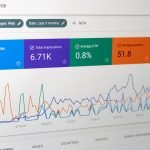Search engine optimization (SEO) can feel a bit overwhelming sometimes. There’s a lot to think about—keywords, rankings, backlinks, technical stuff—and it’s easy to get stuck not knowing where to start or what’s working.
But here’s the good news: Google gives us some free tools that can make the whole process much simpler.
I use these tools almost daily to improve my site’s visibility, spot what’s holding it back, and get real insights into what people are searching for.
These tools are straight from Google, so they’re trustworthy, accurate, and honestly, kind of essential if you want to show up in search results.
If you’re looking to understand your site better, rank higher, and make smarter SEO decisions, these five tools are a great place to start.
5 Google SEO Tools You Should Know?
1. Google Search Console
If you only pick one SEO tool from this list, make it Google Search Console (GSC).
It’s completely free and gives you a clear view of how your website is performing in Google Search.
You can see which keywords people are using to find your site, how many times your pages are showing up in results (impressions), how often people click, and what your average position is.
But there’s more. GSC also:
Shows indexing issues (if pages aren’t being indexed, you’ll know)
Alerts you to mobile usability problems
Helps you submit your sitemap directly to Google
Flags any manual penalties (very rare, but important)
I regularly check the “Performance” tab to find queries where I’m already ranking on page 2 or 3—then I optimize those pages to push them up.
Try it here: https://search.google.com/search-console
2. Google Analytics 4 (GA4)
This one tells you what visitors do once they land on your site.
GA4 can feel a bit confusing at first, but it’s powerful. You can track where your traffic comes from (Google, social media, etc.), how long people stay, which pages they visit most, and when they bounce.
For SEO, I use it to:
See how organic traffic is trending over time
Spot which blog posts or landing pages bring the most traffic
Check user engagement (like scroll depth or conversions)
Compare traffic from different devices (desktop vs mobile)
A pro tip: Connect GA4 with Search Console for deeper insights—so you’re not just seeing how many clicks you got, but also what people did once they arrived.
Set it up here: https://analytics.google.com
3. Google Keyword Planner
Yes, this tool is part of Google Ads, but it’s useful for SEO too—especially when you’re planning content or doing keyword research.
Google Keyword Planner helps you:
Find new keyword ideas based on a topic or website
See monthly search volumes
Check competition level (mostly for ads, but still useful)
Discover related long-tail keywords
For example, if you type in “vegan recipes,” it’ll show keywords like “easy vegan dinner,” “plant-based meal ideas,” and their search volume. That’s a goldmine when writing blog posts or building landing pages.
You’ll need a Google Ads account (but you don’t have to run any ads to use it).
Use it here: https://ads.google.com/home/tools/keyword-planner/
4. PageSpeed Insights
Site speed isn’t just a tech issue—it directly affects SEO. A slow-loading page can lead to higher bounce rates and lower rankings, especially on mobile.
PageSpeed Insights tells you how fast your page loads and gives suggestions on how to improve. It also measures Core Web Vitals—a big part of Google’s ranking algorithm now.
Things it checks:
Loading time (Largest Contentful Paint)
Interactivity (First Input Delay)
Visual stability (Cumulative Layout Shift)
Even small changes, like compressing images or reducing scripts, can boost your score.
Check your speed here: https://pagespeed.web.dev/
5. Google Trends
This tool shows you what people are searching for—right now.
It’s perfect for spotting trending topics, seasonal keywords, or comparing interest in different terms over time. I use it when I’m planning content for blog posts, newsletters, or social media.
You can:
Compare up to five keywords
Filter by location, time range, and category
Discover rising queries related to a topic
Check interest by region or subregion
Let’s say you’re writing about skincare. You might discover that “retinol for beginners” is trending in your country, or that “sunscreen under makeup” spikes every summer.
Explore trends here: https://trends.google.com/trends/
FAQs
Do I need to use all of these tools?
Not necessarily. If you’re just starting out, I’d recommend focusing on Search Console and Analytics first. Once you get comfortable, explore the others based on what you need.
Can I use these tools even if I’m not a developer?
Yes—most of them are beginner-friendly. Google Search Console and Google Trends are especially easy to use.
For PageSpeed Insights, you might need a developer to help with some of the fixes, but you can still understand the reports on your own.
Are these tools free?
Yes. Every tool listed here is 100% free to use. Some, like Keyword Planner, may require a Google Ads account, but you don’t have to spend anything.
What about third-party SEO tools?
There are great ones like Ahrefs, SEMrush, or Ubersuggest. But I like to start with Google’s own tools first—they’re accurate and cover most of the basics without costing a thing.
Final Thoughts
If you’re serious about improving your site’s visibility, these five tools should be in your toolkit. They’re free, reliable, and built by Google—the same company deciding how your site ranks.
The key is to not just install them, but actually check them regularly. Look at the data, see what’s working, and make small, smart changes. Over time, those tweaks can lead to big results.
So here’s a question:
Which of these tools have you used before—and which one are you excited to try next?
Let me know. I’d love to hear how you’re using them.





GIPHY App Key not set. Please check settings